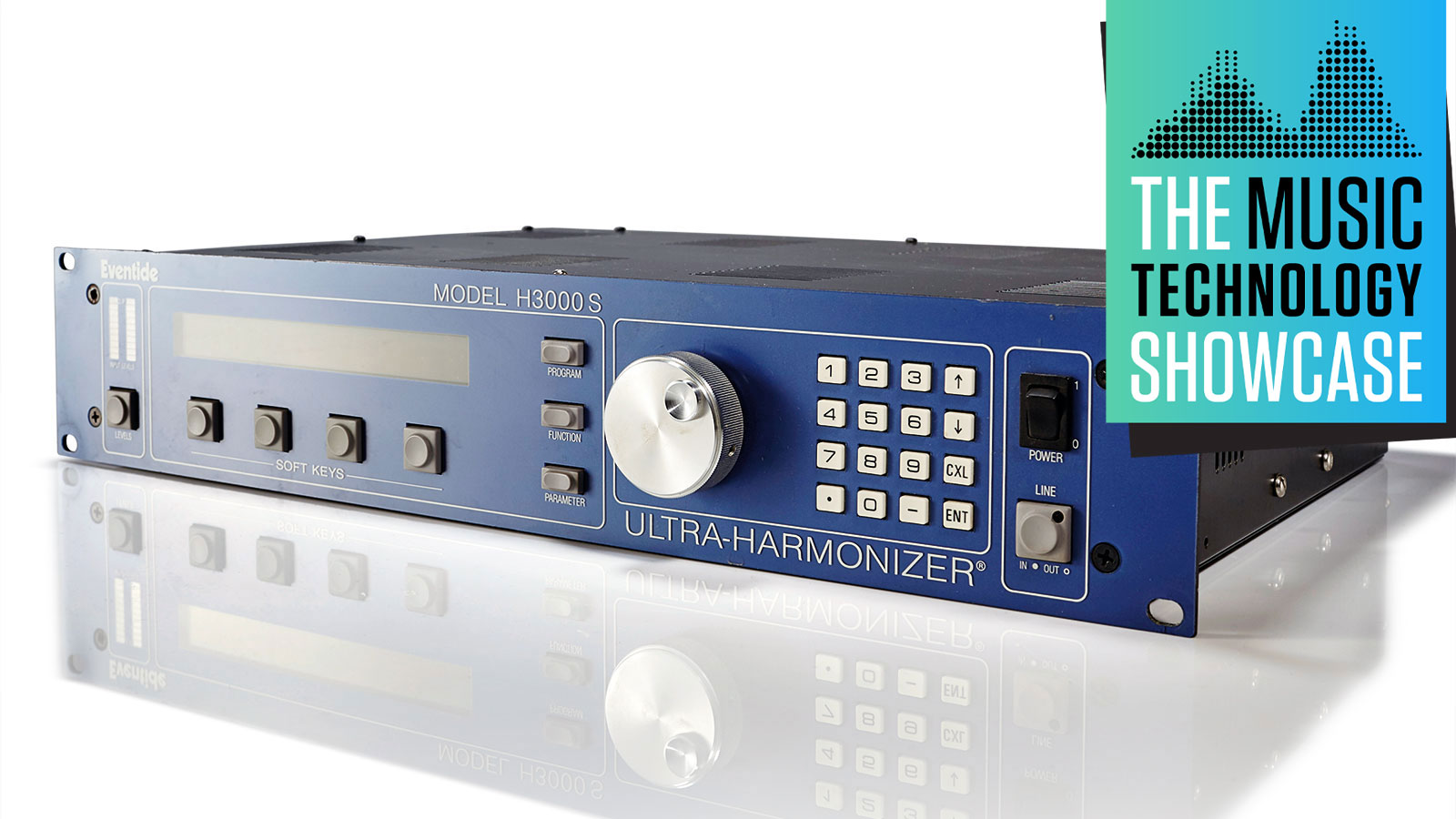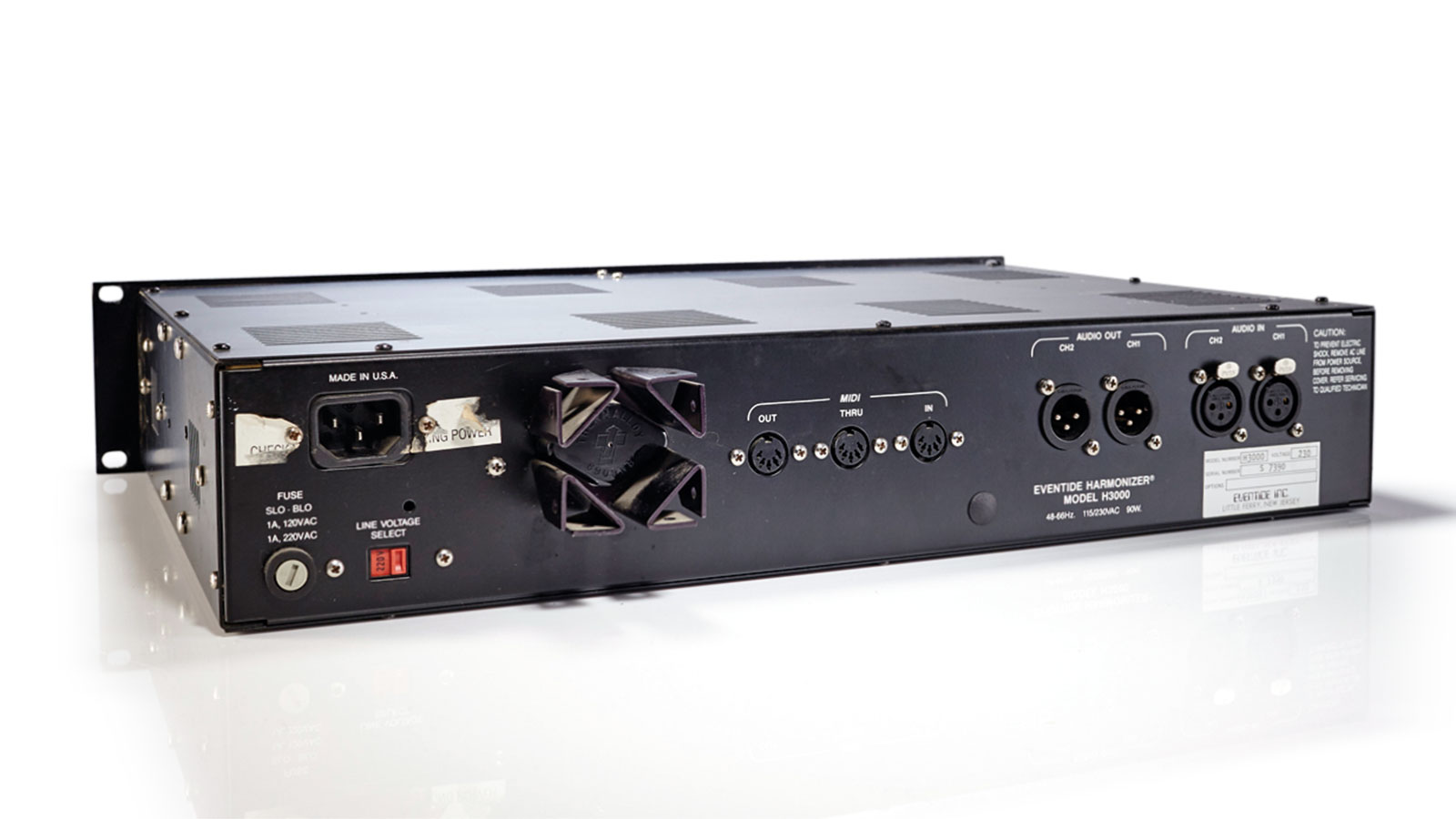Vintage music tech icons: Eventide H3000 Ultra Harmonizer
An iconic ’80s multi-effects unit that has possibly never been bettered

Music Tech Showcase 2021: When Eventide brought out the H910 Harmonizer in 1975 they started an audio revolution.
Its combination of pitchshift, delay and regeneration spawned a whole range of new sounds, from the Tony Visconti ‘Bowie Snare Drum’ (Scary Monsters) to Frank Zappa’s wild Harmonised guitar solos and Godley & Creme’s crazy vocal effects (I Pity Inanimate Objects).
Eventide then experimented with many other types of processor including delays and reverbs but in 1986 they brought all this knowledge together in the H3000, a true stereo multi-effects processor of the highest audio quality with incredible MIDI control implementation.
Once you get the hang of the many menus and sub menus, it’s easy to edit and control and very fast
Another first was the diatonic shift mode. The ability to intelligently harmonise in key brought a whole new range of creative possibilities used by the likes of Steve Vai and Jon Hassell.
The unit itself has a large display with a numerical keypad, four multi function and four single function buttons and a big continuous wheel for data entry and control functions. Once you get the hang of the many menus and sub menus, it’s easy to edit and control and very fast. There are numerous great sounding presets built around 11 basic algorithms.
These include Stereo Delays, Dual Harmonisers, combinations of delay and Harmonisation, Diatonic shift and Reverb. There is also a second function page which allows you to modulate many of the parameters in each program either by MIDI or by the Function Generator which is like a very comprehensive LFO with shapes from a simple sine to Sample and Hold.
Complete control
The ability to externally control so many parameters allows for some wild and programmable effects. The Function Generator itself can also be MIDI controlled so you can get it to do some incredibly sophisticated effects. For example, changing the range of a triggered filter while adding modulation to the delays while altering the intervals of the pitchshifting and adding regeneration.
Want all the hottest music and gear news, reviews, deals, features and more, direct to your inbox? Sign up here.
Also setting the H3000 apart is the Patch Factory. This gives you a set of building blocks, including Harmonisers, delays, multi-mode filters, regeneration controls and summing junctions.
You can utilise these in any order so you can build up your own effects chains, modulate them via the function generator and give yourself control options via MIDI. Some of the Harmoniser patches have reverse functions, others will go up to four octaves higher.
If you just want great sounding presets, it has them in spades, but for those who like to get in there and program, it will keep you entertained for years
You can adjust harmoniser delay length and splice speeds so it’s possible to make some very sophisticated harmonic movements even from a single note line and the spatial possibilities are enormous. The plainest of sounds can take on a real depth and width with sumptuous modulation.
Sonically it has, in my opinion, never been bettered. The H3000 has a sound. Unlike some incredibly sophisticated modern hardware processors which can be a bit sterile, it adds its own colour.
For those that just want great sounding presets, it has them in spades, but for those who like to get in there and program, it will keep you entertained for years with its creative possibilities. Perhaps that’s why we have seen one in pretty much every major studio we’ve ever visited. A classic.
Verdict
The H3000 is quite simply one of the best multi-effects processors you will ever find.
Original RRP £2,500 | Used from £1,000
Buying a used Eventide H3000
What to look for when you're buying a second-hand unit...
1. On the wear and tear side be sure that the Jog Wheel works smoothly and check all the buttons including the numerical keypad.
2. Be sure to load each of the basic programs and pass signal through them. These run from patch no 100 to 114. Check with a stereo input and output.
3. Look out for machines that have the extra patches installed, like the Steve Vai and Bob Clearmountain settings. These will give you lots of extra presets to help you get started.


Future Music is the number one magazine for today's producers. Packed with technique and technology we'll help you make great new music. All-access artist interviews, in-depth gear reviews, essential production tutorials and much more. Every marvellous monthly edition features reliable reviews of the latest and greatest hardware and software technology and techniques, unparalleled advice, in-depth interviews, sensational free samples and so much more to improve the experience and outcome of your music-making.

